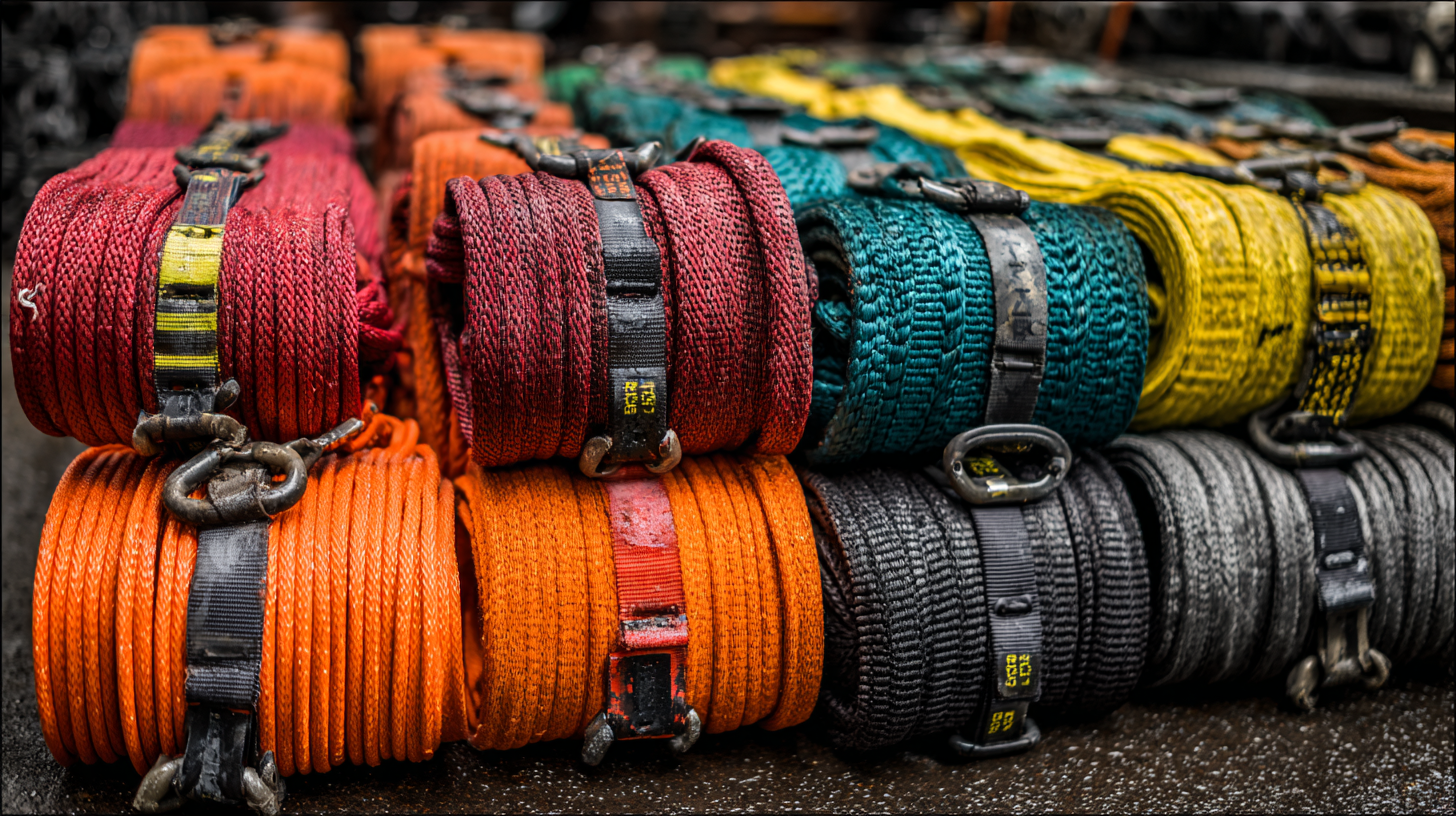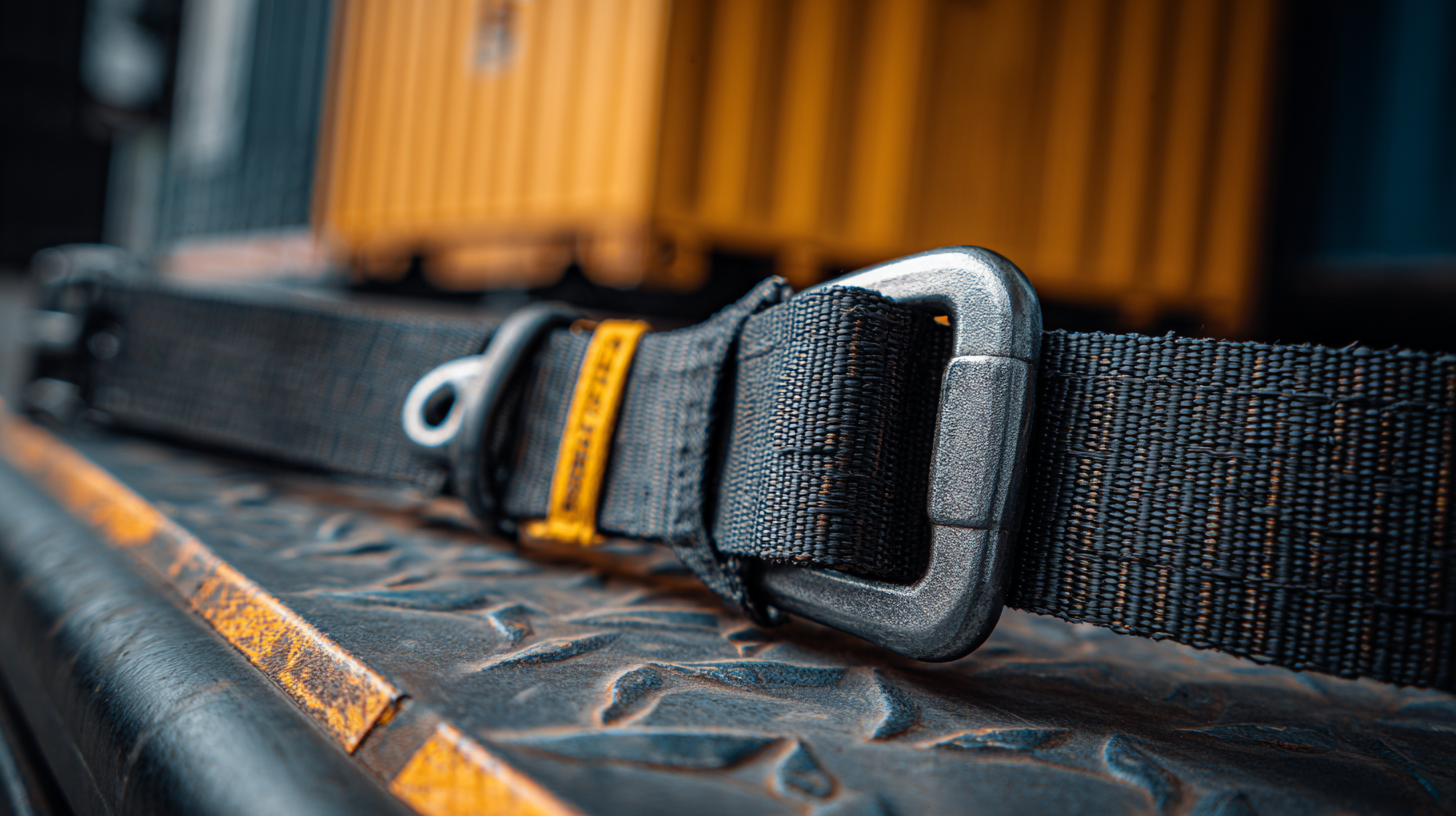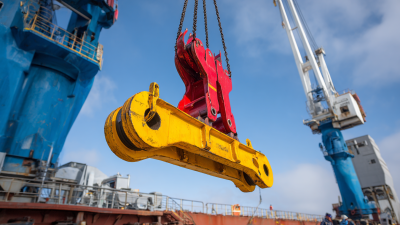When it comes to securing heavy loads, choosing the right Ratchet Straps is crucial for ensuring safety and compliance with industry standards. With a plethora of options available on the market, understanding the technical specifications and features of ratchet straps is essential for maintaining the integrity of your cargo during transport. This guide aims to provide an in-depth look at the factors you should consider when selecting ratchet straps, including weight capacity, material type, and safety certifications. Moreover, we will explore how adhering to industry standards not only protects your load but also enhances the efficiency and reliability of your logistics operations. Whether you are in the construction, automotive, or shipping industry, making informed decisions about ratchet straps can help you achieve optimal performance and peace of mind.

When it comes to securing heavy loads, understanding the different types of ratchet straps is crucial for safety and efficiency. One common type is the standard ratchet strap, designed for general usage and capable of handling a range of weights. These straps come in various widths, often 1 inch to 3 inches, with higher width offering greater strength. For lighter loads, a narrower strap may suffice, while heavier cargo requires a wider option to distribute the load evenly and prevent breakage.
Another specialized type is the cam buckle strap, which provides easier operation for lighter, less stressful applications. These straps are ideal for scenarios where loads need frequent adjustments or quick-release capabilities, making them suitable for recreational uses such as securing kayaks or bicycles. Additionally, industry-specific straps, like those used in moving or construction, may include features such as protective sleeves to shield the strap from sharp edges or materials that resist weathering. By understanding these different types and their applications, users can select the most appropriate ratchet straps for their specific needs, ensuring both safety and reliability during transportation.

When selecting ratchet straps for heavy loads, understanding key industry standards is crucial to ensure safety and efficiency. The most recognized standard is the Society of Automotive Engineers (SAE) J-684, which outlines the performance criteria for tie-downs in the transportation of cargo. This standard emphasizes the importance of load capacity ratings, which must be clearly marked on the strap. It helps users to select the appropriate straps according to the weight and type of cargo, significantly reducing the risk of accidents during transport.
Another vital standard is the American National Standards Institute (ANSI)/Web Sling and Tie Down Association (WSTDA) guideline. These standards provide comprehensive information on the design, manufacturing, and testing of ratchet straps. They cover the recommended working load limits (WLL) and ensure that straps are properly tested for abrasion, temperature, and other environmental factors. Familiarizing yourself with these standards will not only aid in compliance but also enhance load security and reliability, making it easier to transport heavy items confidently.
When selecting ratchet straps for heavy load security, understanding the appropriate strap length is critical. Industry standards suggest that the strap length should exceed the total circumference of the load by at least 6 to 12 inches to ensure adequate tension and stability. For instance, if you're securing a load with a 48-inch circumference, an optimal strap length would be no shorter than 54 inches. According to the Cargo Securement Guide published by the Federal Motor Carrier Safety Administration, a well-chosen strap can prevent loads from shifting during transport, reducing the risk of accidents.
**Tips:** Always measure the load carefully before selecting a strap. Consider the width and height when calculating the necessary strap length. Additionally, keep in mind that longer straps may provide more flexibility but can also introduce slack if not properly tightened, potentially compromising load security.
Furthermore, the working load limit (WLL) should be considered alongside strap length. A ratchet strap's length affects its ability to maintain tension—longer straps can be less efficient when securing heavy loads if they cannot achieve the necessary tightness. According to a study by the American National Standards Institute (ANSI), using straps that are too long can lead to inadequate securing, resulting in loads shifting by as much as 25% during transit. Always balance length with the WLL to ensure maximum safety and effectiveness.
When selecting ratchet straps for heavy loads, understanding the material choices is crucial to ensuring strength and durability. Ratchet straps are commonly made from polyester or nylon, both of which have their unique advantages. Polyester is widely favored for its resistance to UV rays and moisture, making it suitable for outdoor use or situations where exposure to the elements is a concern. On the other hand, nylon offers a higher level of elasticity, which can provide shock absorption, an important factor when securing loads that might shift during transport.
In 2025, consumer testing has highlighted various ratchet strap options, showcasing advancements in material technology. Modern designs often incorporate reinforced stitching and coated hardware to enhance durability and prevent wear and tear over time. The right choice not only depends on the intended load capacity but also on the environmental conditions in which the strap will be used. By focusing on high-quality materials and industry standards, users can find reliable ratchet straps that ensure their heavy loads are secured safely and effectively.
| Strap Material | Breaking Strength (lbs) | Length (ft) | Width (in) | Durability Rating |
|---|---|---|---|---|
| Polyester | 3,335 | 20 | 2 | High |
| Nylon | 2,000 | 15 | 1.5 | Medium |
| Polypropylene | 1,500 | 10 | 1 | Low |
| High-Performance Polyester | 4,000 | 25 | 2 | Very High |
When selecting ratchet straps for heavy loads, safety should be a top priority. Ensuring compliance with load regulations is crucial not only for the protection of your cargo but also for the safety of personnel and the public. The first step is to familiarize yourself with the relevant industry standards that dictate the minimum requirements for securing loads. Different sectors, such as logistics, construction, and automotive, have specific regulations that must be met to avoid legal penalties and ensure safe transport.
It is essential to consider the working load limit (WLL) of the ratchet straps. This figure indicates the maximum load the straps can safely hold. When dealing with heavy loads, always opt for straps that exceed the WLL of your cargo to build in an extra safety margin. Additionally, inspect the ratchet straps for any signs of wear and tear before each use, as compromised equipment can significantly increase the risk of failure. By adhering to these safety considerations and maintaining compliance with industry standards, you can secure your loads effectively and minimize the likelihood of accidents.







